
How to use a multimeter? This is a small challenge for many beginners or hobbyists who have a multimeter but don’t know how to use it. A multimeter is an essential measuring instrument in the electrical and appliance industry, primarily used for measuring voltage, current, and resistance. Multimeters are classified into analog multimeters and digital multimeters based on their display method. It is a multifunctional, multi-range measuring instrument, also known as a three-use meter or multi-use meter. Digital multimeters are emphasized because they are more precise, intuitive, and easier to use. However, analog multimeters have advantages in circuit board repairs compared to digital multimeters; each has its strengths.
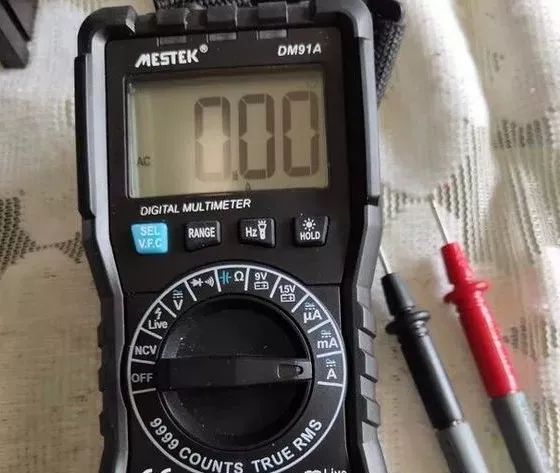
Digital multimeter, foolproof. Suitable for beginners.
1. Before measuring, ensure the multimeter is intact and the readings are correct. The probes should be intact. The accessories should be intact. Especially when measuring high voltage, ensure the probe insulation is good.
2. Select the appropriate range according to the object being measured: choose the voltage range for voltage, the current range for current, and the ohm range for resistance. The probes should be plugged into the correct sockets. When measuring voltage and resistance, the black probe should be plugged into the COM port, and the red probe into the V/Ω port. Note that when measuring voltage, the probes must not be plugged into the current interface; otherwise, the multimeter may burn out, and in severe cases, it could cause electric shock. Therefore, everyone must select the appropriate range and connect the probes correctly before measuring. When measuring DC voltage, pay attention to polarity; the red probe is positive, and the black probe is negative (for analog multimeters, it’s the opposite: black is positive, and red is negative).
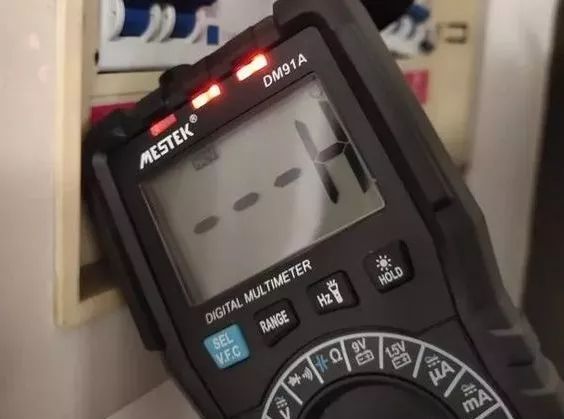
NCV range measures whether wires and cables are live from a distance.
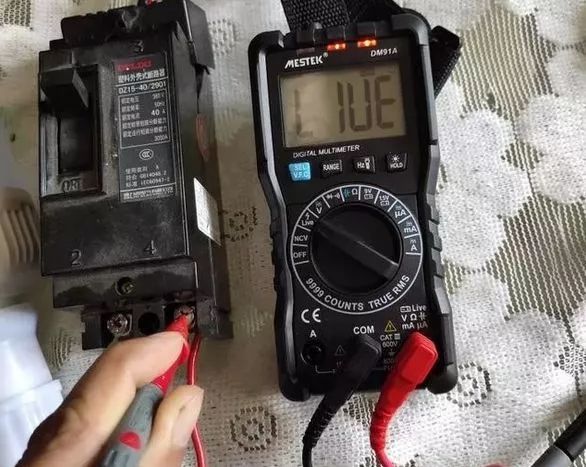
Live range detects the method of circuit live and neutral wires.
From the two images above, it can be seen that the NCV range is equivalent to an induction pen, allowing the inspection of the continuity of wires without breaking the skin to determine if the wires or cables are live. The live range refers to the so-called live wire L, which is equivalent to a regular electric pen that requires contact with electrical devices for measurement. Many multimeters now come with NCV functionality, and some even have temperature detection functions, making them particularly suitable for air conditioning repairs.
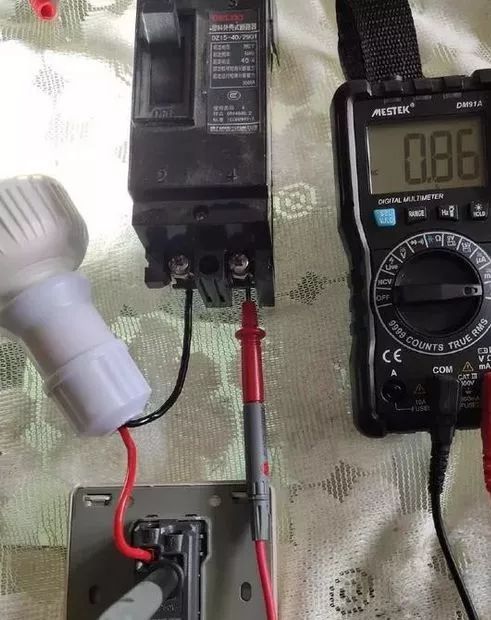
Using the current range of the multimeter.
The current range of the multimeter is not used frequently in practical applications unless one is specifically engaged in circuit board repair work. They are connected in series with the electrical appliance in the circuit, as shown in the image above. It’s important to clearly distinguish between AC and DC. Do not mistakenly measure voltage. This can easily cause a short circuit, leading to damage to the multimeter. Additionally, follow the principle of measuring from large to small. To measure large currents, the red probe must be plugged into the 10A socket, and care must be taken not to exceed the meter’s range.
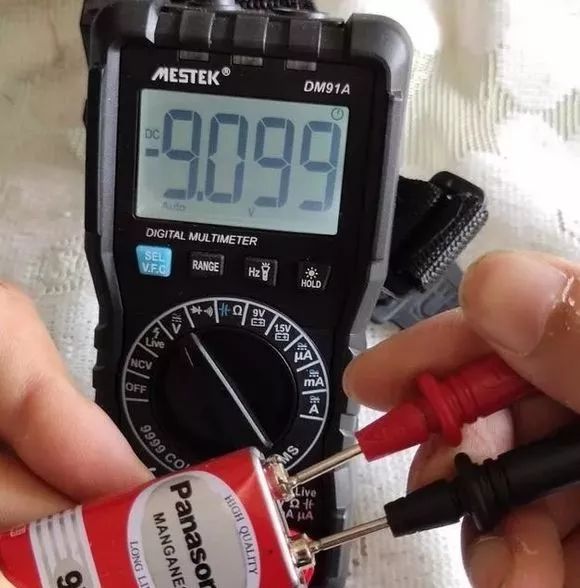
Measuring batteries, the red probe is positive. This means red is the negative terminal.
As for the battery range, it’s simple and intuitive; it’s used to measure batteries. How do we measure voltage? We turn to the voltage range, first distinguishing between the DC and AC ranges. The DC voltage range is generally used for online testing of circuit boards, which requires live testing. This is more common in the home appliance repair industry and in companies specializing in circuit board repairs; of course, mobile phone repairs also involve live testing. The AC voltage range is widely applied in household circuits, companies, malls, and various high and low voltage electrical devices. The first step in repairing various electrical devices is to check whether they have power. It’s important to select the correct scale on the meter, typically AC has ranges of 20V, 200V, 600V, and 750V. Why is there a 750V range? Because there are also low voltages of 660V.
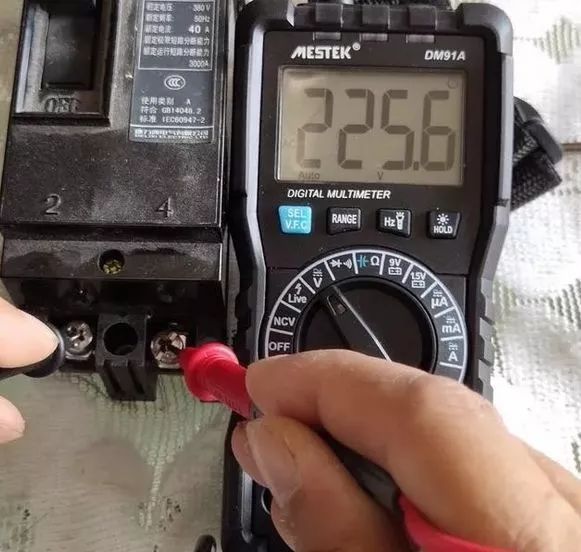
Online detection of AC voltage measurement.
To determine whether a line is leaking or short-circuited, the most important thing is to check its resistance. Therefore, the most crucial range of the multimeter is the resistance range. The continuity of the line is generally checked using the buzzer range. For testing diodes, transistors, power transistors, etc., the diode range can be used.
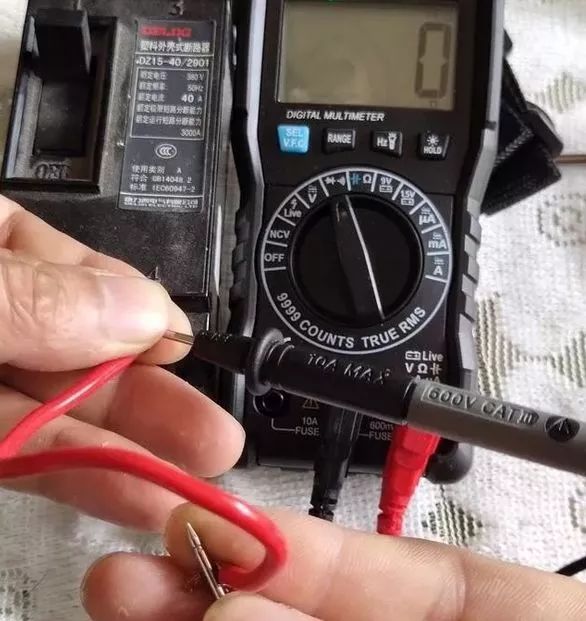
Measuring the continuity of the line.
We switch to the resistance range; for instance, a cable or the BV wire used in households should have a resistance greater than 500KΩ. A resistance below 500KΩ and above 200KΩ indicates slight leakage; below 200KΩ and above 20KΩ indicates moderate leakage. 20KΩ indicates severe leakage, and the leakage protector will definitely trip.
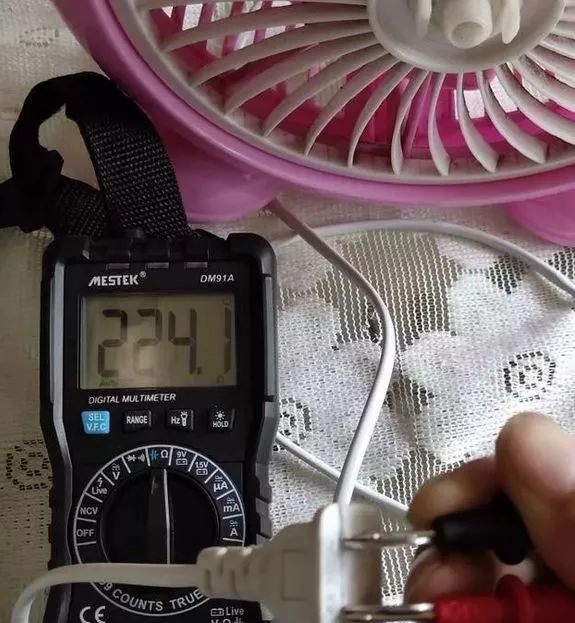
Measuring the resistance of electrical appliances.
The resistance range can also be used to check the coils of electrical appliances to determine their condition, such as fans, air conditioners, washing machines, rice cookers, etc. These require extensive repair experience, and the maintenance of devices often needs to use the resistance range, so being proficient in using the resistance range indicates good repair skills.
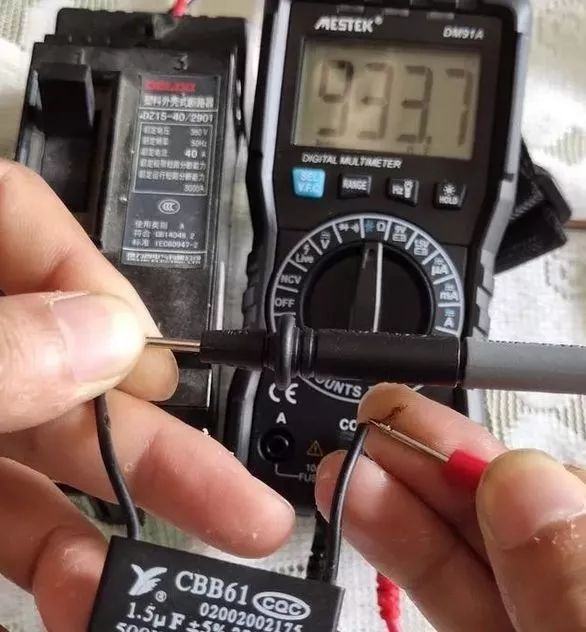
Multimeter for checking capacitors.
The capacitor range is relatively simple to check; just switch to the capacitor range. First, discharge the capacitor by connecting the two leads together or using a screwdriver to short-circuit (large capacitors must be discharged to prevent electric shock). If the measured capacitance is lower than the rated capacitance, it indicates that the capacitor is damaged and needs to be replaced. It’s best to match the original capacitance; otherwise, if it’s too small, it won’t handle the load, and if it’s too large, the current will increase and could burn out.
Welcome to submit articles to discuss the development of the home appliance service industry together!
Likes are a form of encouragement, share to spread friendship!情